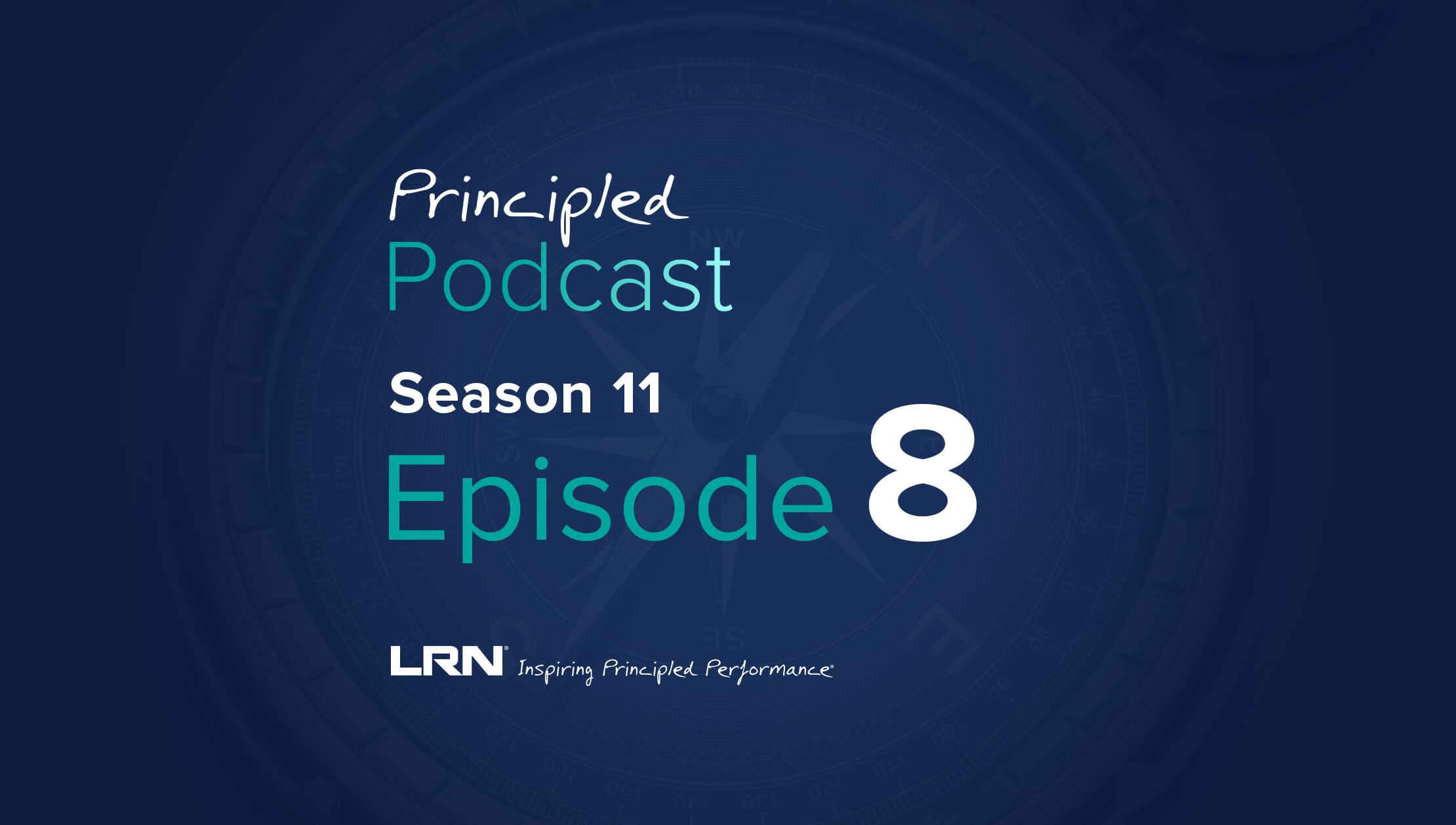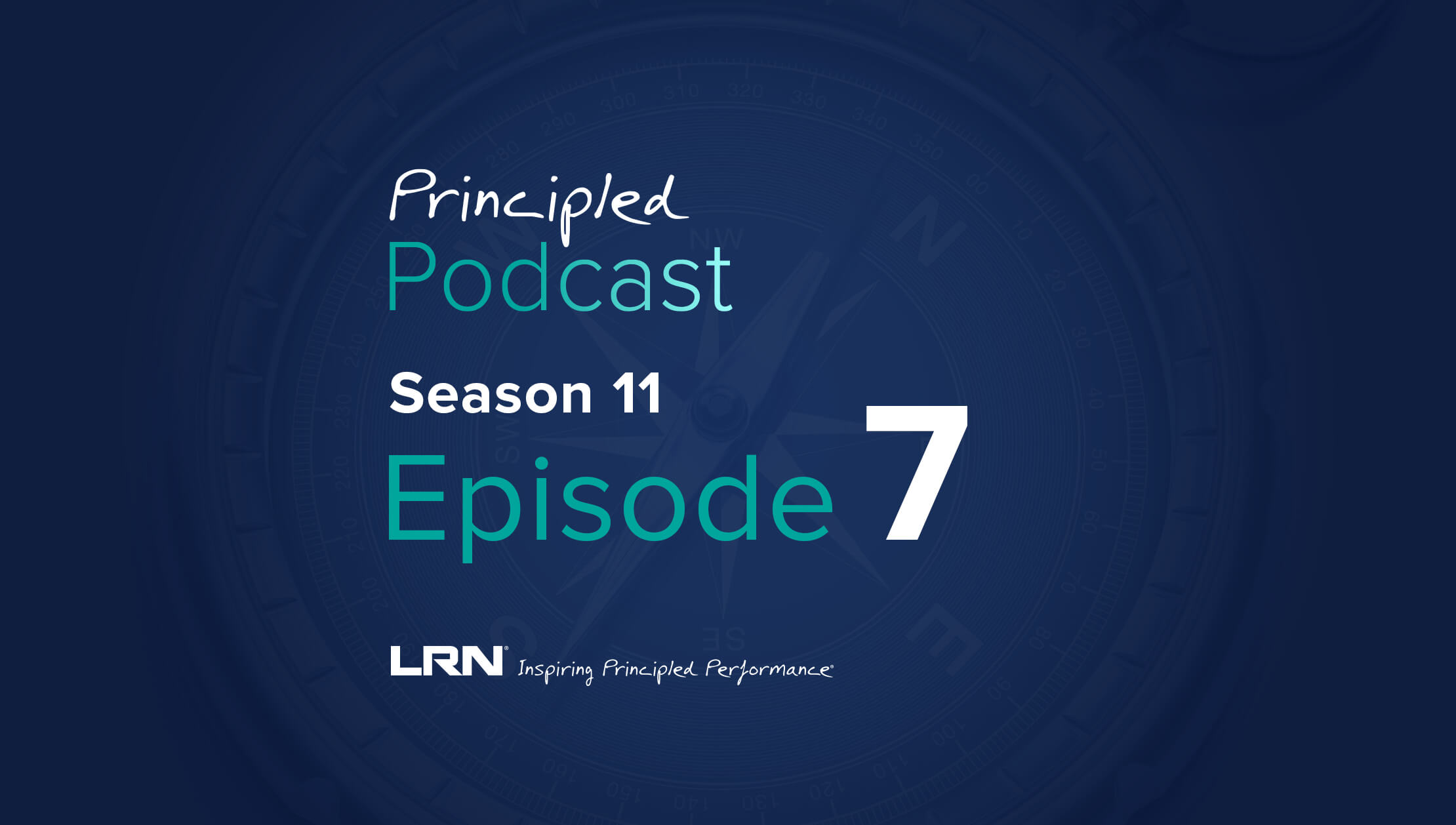Government agencies around the world, including the US Department of Justice, are paying more attention to the effectiveness of compliance programs. In fact, the DOJ’s three fundamental questions in their Evaluation of Corporate Compliance Programs guidance ask:
- Is the compliance program well designed?
- Is it adequately resourced and empowered to function effectively?
- Does it work and is understood in practice?
To help compliance professionals answer these questions and uncover which data metrics matter to determining program effectiveness, LRN Chief Advisory Officer, Ty Francis recently led a webinar focusing on aligning compliance analytics to DOJ and global regulatory expectations. You can watch the full recording here.
Here are three key takeaways from the discussion, including a look at Catalyst Reveal, LRN’s compliance benchmarking and analytics tool.
Why data matters to ethics and compliance professionals
Organizations spend billions of dollars on corporate training each year and, for the most part, hope that by delivering training, they check a box and their workforce is covered. In reality, training is only one part of the solution. Understanding if that training has been effective is the crucial part.
Francis noted that if E&C teams can improve the data analytics around training, they will see greater success in demonstrating overall program effectiveness to their target learners. Only using the basic features like pass, fail, in progress, and completed won’t cut it anymore. “These are inputs,” said Francis, “and won't actually tell you if the training is working or how it will affect a business outcome. Knowing 99% of your workforce has completed a particular training module tells you just that: they've completed it. It doesn't tell you how they absorbed that information or how they intend to use it in practice.”
Most conversations among governance, compliance, and ethics professionals center around the question of, “How can we create, run and improve better compliance and ethics programs?” Having real-time data and analytics at their fingertips to help craft and improve their program is essential to answering that question. When E&C teams identify misconduct or wrongdoing, most companies run root cause analysis where they identify the problem, they fix the problem, and they make sure the problem never happens again. But that’s not the final step, explained Francis. “Organizations need to make sure they continuously monitor these issues to prevent history repeating itself.”
Real-time, continuous data monitoring and periodic reviews, he concluded, help improve compliance training. In this rapidly changing world, giving employees more targeted and relevant training will lead to more innovative, forward-looking curriculum designs and better business outcomes.
Where regulators stand on data usage for compliance programs
Government agencies are increasingly scrutinizing the effectiveness of compliance programs. The fundamental questions they ask are:
- Is the compliance program well designed?
- Is it adequately resourced and empowered to function effectively?
- Does it work and is understood in practice?
In the US, the DOJ’s criminal division provided guidance back in June 2020 about how it would further evaluate corporate compliance programs and included some very specific references to the use of data analytics. But emphasis on data usage isn’t entirely new. For years, regulatory bodies around the world have signaled their increased reliance on data analytics to identify potential wrongdoing. According to a former DAG, “Using data analytics allows for greater efficiency in identifying investigation targets. It expedites case development and saves resources, making for the overall program of enforcement more targeted and effective.”
Effective, Francis explained, is the key word here. “If misconduct does occur, prosecutors will ask what the company did to analyze or track its own data, both at the time of the misconduct as well as at the time of a potential resolution. So, how can you use all the data you collect from your training and from your disclosure tools to make your programs more effective? Real-time data analytics solves that problem.”
LRN’s 2022 Ethics & Compliance Program Effectiveness Report further proves this point. According to the report:
- 48% of high-performing E&C programs use data metrics from their training system to measure effectiveness and impact.
- 53% of those same high-performing programs plan to increase use of data metrics to identify trends and growth areas.
- 68% say data, on strengths and weaknesses of their culture helps gauge program impact.
How a benchmarking and analytics tool helps compliance teams
An emerging trend in the E&C space has been organizations’ increasing search for compliance technologies that can visualize, interpret, and provide actionable data without requiring much manual manipulation. Having a benchmarking and analytics tool—like LRN’s Catalyst Reveal—can help ethics and compliance teams better understand employee interactions, analyze those outcomes, and benchmark against industry peers.
Francis described some of the key benefits of Catalyst Reveal:
- Compliance teams gain direct access to all relevant data sources across divisions, functions, and countries, allowing for more timely and effective program monitoring and testing company policies and controls.
- Compelling visualizations and flexible dashboards help ethics and compliance teams quickly understand program success and gain insights into learner performance, sentiment, and culture. They can track every step of a learning campaign from launch to post-learning sentiment with in-depth and digestible insights into completion rate, time on task, knowledge results, and geography.
- Benchmarking capabilities put compliance program performance in context with programs from companies around the world.
- Contextual benchmarks and customized reports enable compliance teams to deliver an audit-ready, data-backed view of program performance.
- Sentiment analysis, powered by AI, can uncover hidden insights into culture and course resonance, curriculums, and course outcomes—ultimately helping E&C teams track employee feedback in real time and make leadership-level decisions that align with expectations.
Francis particularly stressed the importance measuring ethical corporate culture. “We need to look at how culture is affecting behaviors and companies, but we can't do that until we measure the culture itself,” he said. Most E&C program and culture assessments concentrate on checking program structure, processes, and controls against a chosen benchmark. But Francis noted that using LRN’s culture pulse data, which is embedded in campaigns and courses across its compliance learning system Catalyst Reach, can help E&C professionals identify what drives employee behavior, decision-making, and performance. “By measuring levels of trust, organizational justice, and willingness to speak out,” Francis concluded, “you will be better positioned to analyze the health of your ethical environment.”
The key takeaway
Incorporating data analytics into your ethics and compliance program has changed from a nice-to-have to an essential element for driving effectiveness. For more details on Catalyst Reveal, watch the full webinar recording with Ty Francis and visit the Catalyst Reveal product page at LRN.com. You can also browse our collection of resources on benchmarking.



